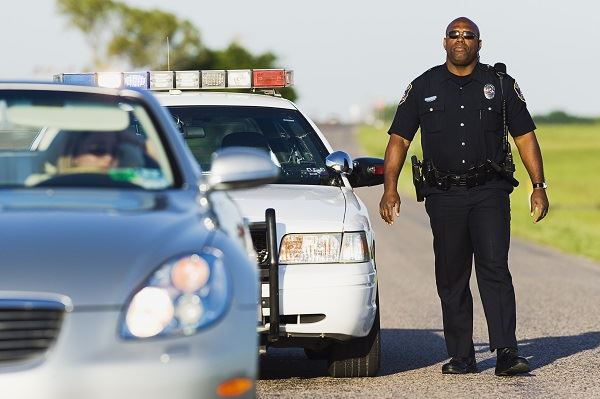 It was just like the good old days in Lamont when a posse of peace officers
in northern California wrote
thirty-nine citations in one day at two locations. Many motorists with tickets into Lamont feel the same
way about the wave of tickets issued on the Grapevine portion of I-5 here
in Kern County.
It was just like the good old days in Lamont when a posse of peace officers
in northern California wrote
thirty-nine citations in one day at two locations. Many motorists with tickets into Lamont feel the same
way about the wave of tickets issued on the Grapevine portion of I-5 here
in Kern County.
Officers from the Burlingame Police Department, Atherton Police Department, South San Francisco Police Department, and Menlo Park Police Department all descended on Menlo Park and Atherton to write citations and “educate” motorists and pedestrians regarding basic traffic offenses like illegal turns, failure to yield, and other infractions. Officers stopped fifty vehicles or pedestrians and issued seventeen cellphone tickets, five texting tickets, and three speeding tickets among the thirty-nine tickets issued that day.
A government grant funded the saturation enforcement operation.
Stepped-Up Enforcement
Did you notice how citations outnumbered warnings almost four to one? As a rule of thumb, the ration is normally more like three to one or even two to one. However, in a grant-funded Selective Traffic Enforcement Program, officers must write more citations to justify the financial investment. Roughly the same rule applies in a non-grant-funded Maximum Enforcement Period. Officers are either told or “encouraged” to write additional citations to cover the cost of officer overtime and other expenses.
Either way, the participating officers often write citations in situations that normally call for warnings, and these borderline citations are more difficult for a prosecutor to prove in court.
Cellphone Violations
Speaking of borderline citations, it’s also interesting how the story divides cellphone and texting citations. The implication is that those seventeen tickets were for cellphone use, as opposed to texting. Any cellphone use – whether it’s using a navigation aid or sending an e-mail – constitutes distracted driving.
However, the problem is that VC 23123 and 23123.5 only apply to talking and texting. Nevertheless, officers tend to write citations for any cellphone use, which basically shifts the burden of proof to the defendant to show that the phone use was not either talking or texting.
Getting Legal Help
The aggressive lawyers at Bigger & Harman, APC, are committed to giving individuals a voice when dealing with speeding and traffic tickets. Call today at 661-859-1177 or email attorney@markbigger.com to receive the personal professional attention you deserve. En español, llame al 661-376-0214.
It was just like the good old days in Lamont when a posse of peace officers in northern California wrote thirty-nine citations in one day at two locations. Many motorists with tickets into Lamont feel the same way about the wave of tickets issued on the Grapevine portion of I-5 here in Kern County.
Officers from the Burlingame Police Department, Atherton Police Department, South San Francisco Police Department, and Menlo Park Police Department all descended on Menlo Park and Atherton to write citations and “educate” motorists and pedestrians regarding basic traffic offenses like illegal turns, failure to yield, and other infractions. Officers stopped fifty vehicles or pedestrians and issued seventeen cellphone tickets, five texting tickets, and three speeding tickets among the thirty-nine tickets issued that day.
A government grant funded the saturation enforcement operation.
Stepped-Up Enforcement
Did you notice how citations outnumbered warnings almost four to one? As a rule of thumb, the ration is normally more like three to one or even two to one. However, in a grant-funded Selective Traffic Enforcement Program, officers must write more citations to justify the financial investment. Roughly the same rule applies in a non-grant-funded Maximum Enforcement Period. Officers are either told or “encouraged” to write additional citations to cover the cost of officer overtime and other expenses.
Either way, the participating officers often write citations in situations that normally call for warnings, and these borderline citations are more difficult for a prosecutor to prove in court.
Cellphone Violations
Speaking of borderline citations, it’s also interesting how the story divides cellphone and texting citations. The implication is that those seventeen tickets were for cellphone use, as opposed to texting. Any cellphone use – whether it’s using a navigation aid or sending an e-mail – constitutes distracted driving.
However, the problem is that VC 23123 and 23123.5 only apply to talking and texting. Nevertheless, officers tend to write citations for any cellphone use, which basically shifts the burden of proof to the defendant to show that the phone use was not either talking or texting.
Getting Legal Help
The aggressive lawyers at Bigger & Harman, APC, are committed to giving individuals a voice when dealing with speeding and traffic tickets. Call today at 661-859-1177 or email attorney@markbigger.com to receive the personal professional attention you deserve. En español, llame al 661-376-0214.
CHP officers working on the I-5 sometimes write traffic tickets in STEP campaigns that can’t hold up in court. To fight your citation, call Bigger & Harman.CHP officers working on the I-5 sometimes write traffic tickets in STEP campaigns that can’t hold up in court. To fight your citation, call Bigger & Harman.
